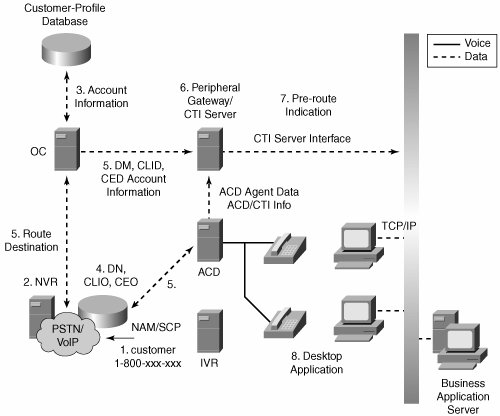| Computer telephony integration (CTI) enables access to computer-processing functions while making, receiving, and managing telephone calls. CTI applications allow users to perform tasks such as retrieving customer information from a database provided by the caller ID. CTI applications also enable users to use the information captured by an interactive voice response (IVR) system to route a call to an appropriate customer service representative or to provide information to the individual receiving the call. The following is a partial list of Cisco CTI applications: Cisco IP SoftPhone Cisco IP SoftPhone, a desktop application, turns your computer into a full-feature telephone with the added advantages of call tracking, desktop collaboration, and one-click dialing from online directories. You can also use Cisco IP SoftPhone in tandem with a Cisco IP phone to place, receive, and control calls from your desktop PC. All features function in both modes of operation. Cisco IP Auto Attendant The Cisco IP Auto Attendant application works with Cisco Unified CallManager to receive calls on specific telephone extensions and allows callers to select extensions. Cisco WebAttendant Cisco WebAttendant provides a GUI for controlling a Cisco IP phone to perform attendant console functions. Cisco Personal Assistant Cisco Personal Assistant or a virtual secretary can selectively handle incoming calls and help users place outgoing calls.
To illustrate how CTI works, consider a customer inquiry to a banking institution, as shown in Figure B-8. The customer dials a toll-free telephone number from a home telephone. The agent who answers the call is in a pool of agents whose calls are delivered via an automatic call distributor (ACD). Figure B-8 follows these steps: Figure B-8. Computer Telephony Integration 
1. | The customer dials the toll-free number.
| 2. | A Network Voice Response (NVR) system plays a script that collects caller-entered digits (CEDs), such as an account number.
| 3. | The network sends a route request through an optical carrier (OC) interface to access the customer-profile database.
| 4. | The CED, dialed number (DN), and calling line ID (CLID) are referenced in the customer profile database.
| 5. | A route destination is returned to the network applications management/service control point (NAM/SCP) and the DN, CLID, CED, and account information are forwarded to the automatic call distribution (ACD) system and peripheral gateway/CTI server.
| 6. | The CTI server matches the selected agent from the ACD.
| 7. | The CTI server sends a preroute indication across the CTI server interface to the TCP/IP network for pop-up delivery to the selected agent.
| 8. | The TCP/IP network delivers the caller account information and CED information to the selected agent desktop.
|
Note The sample call data flow outlined in this section depicts an IVR in the carrier network. Alternatively, prompting may occur through an IVR at the premises or through a combination of network and premises-based IVRs.
|
